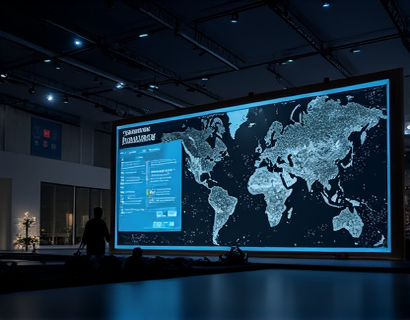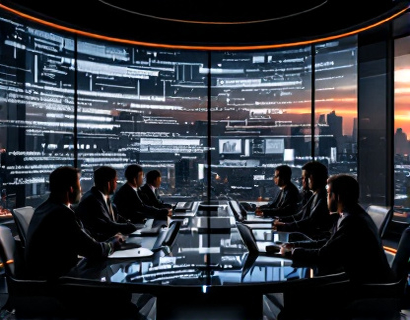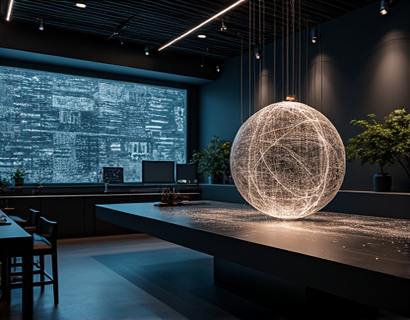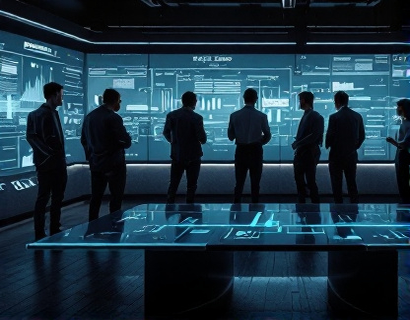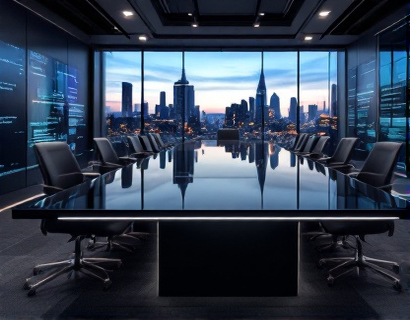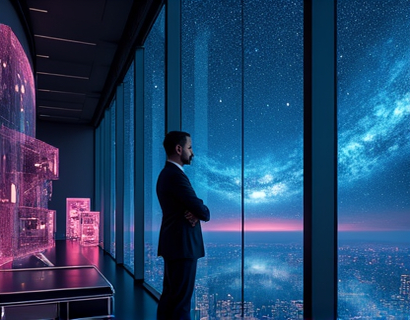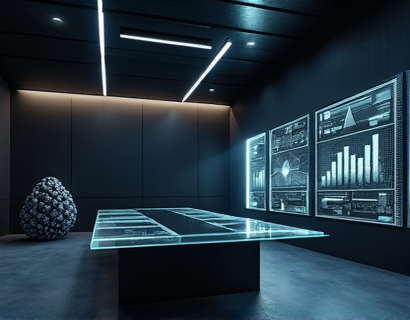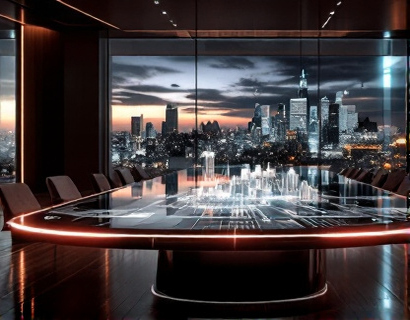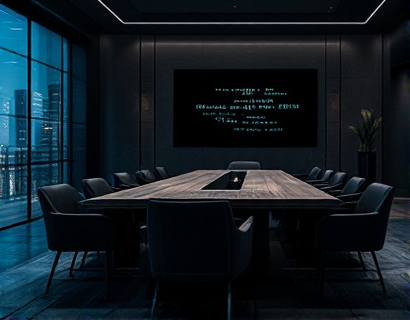Transforming Daily Life with Augmented Reality Shopping
In the rapidly evolving world of e-commerce, augmented reality (AR) has emerged as a transformative force, redefining how consumers interact with products and services. This technology, once confined to the realms of gaming and entertainment, is now revolutionizing the shopping experience, offering a blend of the physical and digital worlds. For tech-savvy consumers eager to enhance their lifestyle, AR shopping presents a unique opportunity to experience products in a more immersive and interactive manner. This article delves into the intricacies of augmented reality shopping, exploring its benefits, applications, and the future it holds for lifestyle enhancement.
Understanding Augmented Reality Shopping
Augmented reality shopping leverages AR technology to overlay digital information and virtual objects onto the real world, as seen through a device's camera. This seamless integration allows consumers to visualize products in their own environment before making a purchase. For instance, a customer can use an AR app to see how a piece of furniture would look in their living room, or how a new pair of glasses would suit their face, all without leaving the comfort of their home.
The core idea behind AR shopping is to bridge the gap between online and offline shopping experiences. Traditional e-commerce platforms often struggle with the lack of tactile interaction, leading to uncertainties and higher return rates. AR shopping mitigates these issues by providing a more realistic preview of products, thereby enhancing customer confidence and satisfaction.
Benefits of Augmented Reality in E-Commerce
One of the most significant advantages of AR shopping is the reduction in return rates. By allowing customers to preview products in their actual setting, AR helps ensure that the product meets their expectations, reducing the likelihood of dissatisfaction and returns. This not only benefits the consumer but also saves retailers the costs associated with returns and exchanges.
Another benefit is the increased engagement and interaction with products. AR experiences are inherently more engaging than static images or descriptions, leading to longer browsing times and a higher chance of conversion. This immersive experience can also foster a deeper emotional connection with the product, enhancing brand loyalty and customer retention.
Moreover, AR shopping can significantly enhance the shopping journey for complex or high-value items. For example, in the automotive industry, customers can use AR to visualize different car models and customizations in their driveway, making the decision-making process more informed and enjoyable. Similarly, in the fashion industry, AR try-on features allow customers to see how clothes and accessories would look on them, eliminating the need for physical fittings and trials.
Applications of Augmented Reality in Various Industries
The potential of AR shopping extends across multiple industries, each leveraging the technology in unique ways to enhance the customer experience. Here are some key sectors where AR is making a significant impact:
- Furniture and Home Decor: Apps like IKEA Place allow users to see how furniture would look and fit in their space before purchasing. This feature has been particularly successful in reducing return rates and increasing customer satisfaction.
- Fashion and Beauty:
- Automotive:
- Real Estate:
- Health and Fitness:
Brands like Sephora and L'Oréal have implemented AR try-on features, enabling customers to test makeup and accessories virtually. This not only enhances the shopping experience but also provides a more accurate representation of how products will look.
Car manufacturers and dealerships use AR to let customers visualize different car models and customizations. This technology helps in making informed decisions and personalizing the buying experience.
AR can transform the real estate industry by allowing potential buyers to visualize furniture and decor in empty properties, providing a more comprehensive view of the space.
Fitness apps and wearables can use AR to guide users through workouts, overlaying instructions and metrics in real-time, making the exercise experience more engaging and effective.
These applications demonstrate the versatility and adaptability of AR technology, making it a valuable tool for businesses across various sectors. By integrating AR into their e-commerce platforms, companies can offer a more personalized, interactive, and satisfying shopping experience.
Technological Foundations of Augmented Reality Shopping
To understand the mechanics behind AR shopping, it's essential to delve into the technological components that make it possible. AR technology relies on a combination of hardware and software to create the seamless overlay of digital content onto the real world.
On the hardware side, devices such as smartphones, tablets, and AR glasses equipped with cameras, sensors, and processors play a crucial role. These devices capture the real-world environment and use computer vision algorithms to identify and track surfaces, objects, and markers. The processed data is then used to render and overlay virtual content accurately.
On the software side, AR development frameworks like ARKit (for iOS) and ARCore (for Android) provide the necessary tools and APIs for developers to create AR experiences. These frameworks handle complex tasks such as environment understanding, light estimation, and object recognition, enabling the creation of realistic and interactive AR content.
Additionally, cloud computing and machine learning contribute to the efficiency and accuracy of AR experiences. Cloud services can process large amounts of data and perform intensive computations, reducing the load on devices and ensuring smooth performance. Machine learning algorithms can enhance object recognition and user interaction, making AR experiences more intuitive and responsive.
Challenges and Considerations in Implementing AR Shopping
While the benefits of AR shopping are clear, there are several challenges and considerations that businesses must address to implement this technology effectively:
First, the adoption of AR technology requires a certain level of device compatibility. Not all users may have access to devices capable of running AR applications, which can limit the reach and accessibility of AR shopping features. To mitigate this, businesses should ensure that their AR experiences are optimized for a wide range of devices and provide alternative options for those with less capable hardware.
Second, the quality and accuracy of AR experiences are critical to user satisfaction. Poor tracking, lag, or misalignment of virtual content can lead to frustration and a negative user experience. Investing in high-quality hardware and software, and continuously testing and refining AR experiences, is essential to maintaining user trust and engagement.
Third, privacy and data security concerns must be addressed. AR applications often require access to the device's camera and sensors, which can raise privacy issues. Businesses must be transparent about data collection and usage, and implement robust security measures to protect user information.
Lastly, the success of AR shopping depends on the seamless integration of AR features into the overall user experience. The AR component should complement, not overwhelm, the existing e-commerce platform. A well-designed user interface and intuitive navigation are crucial to ensuring that users can easily access and utilize AR features without feeling overwhelmed.
Future Trends in Augmented Reality Shopping
As AR technology continues to advance, the future of AR shopping looks promising, with several trends shaping the landscape:
First, the rise of 5G networks will significantly enhance the performance of AR applications. With faster and more reliable connectivity, AR experiences will become more fluid and responsive, reducing latency and improving overall user satisfaction.
Second, the integration of AR with other emerging technologies such as virtual reality (VR) and the Internet of Things (IoT) will create more immersive and interconnected shopping experiences. For example, VR can offer virtual store visits, while IoT devices can provide real-time product information and recommendations.
Third, personalized AR experiences will become more prevalent, leveraging data analytics and machine learning to tailor recommendations and interactions based on user preferences and behavior. This personalization will not only enhance the shopping experience but also drive higher conversion rates and customer loyalty.
Fourth, the expansion of AR into new industries and use cases will continue to broaden the scope of AR shopping. From education and travel to healthcare and entertainment, the potential applications of AR are vast, offering endless opportunities for innovation and growth.
In conclusion, augmented reality shopping is poised to revolutionize the way we interact with products and services online. By providing a more immersive, interactive, and personalized shopping experience, AR has the potential to significantly enhance the lifestyle of tech-savvy consumers. As the technology continues to evolve, businesses that embrace AR shopping will be well-positioned to meet the changing needs and expectations of modern consumers.





















